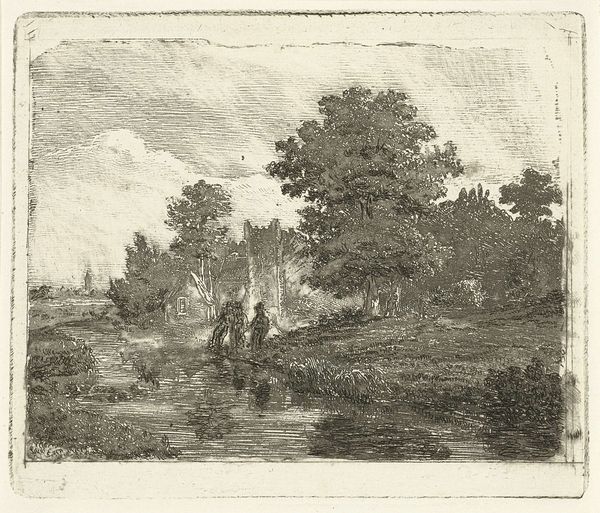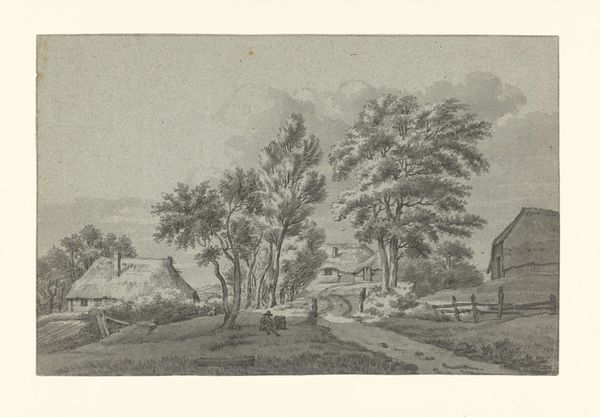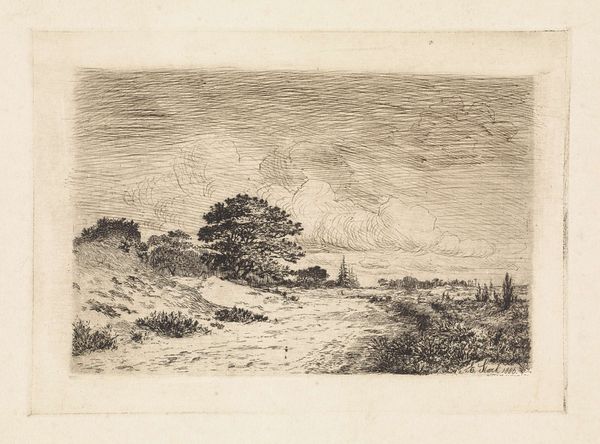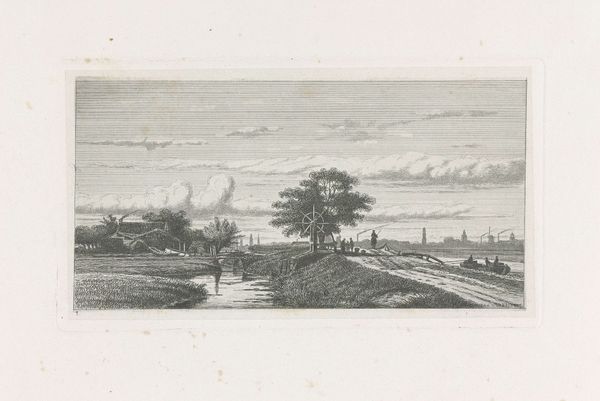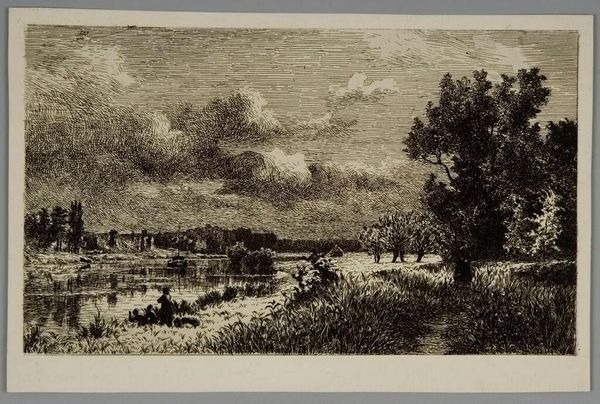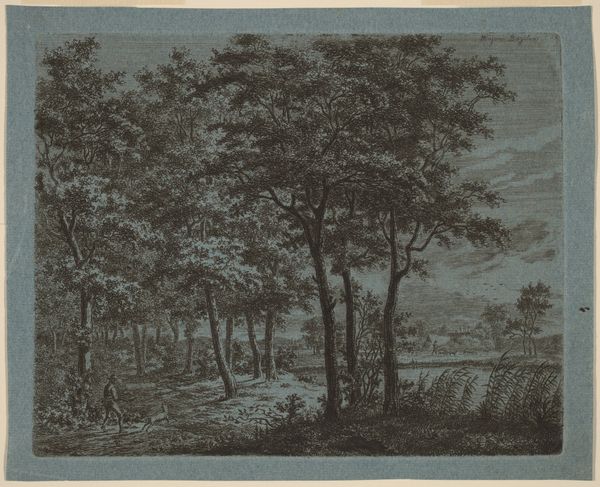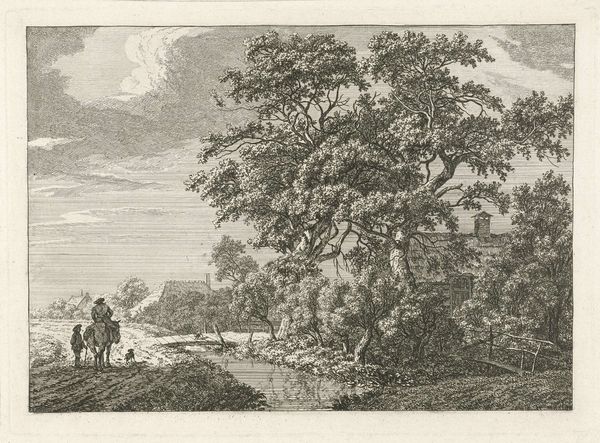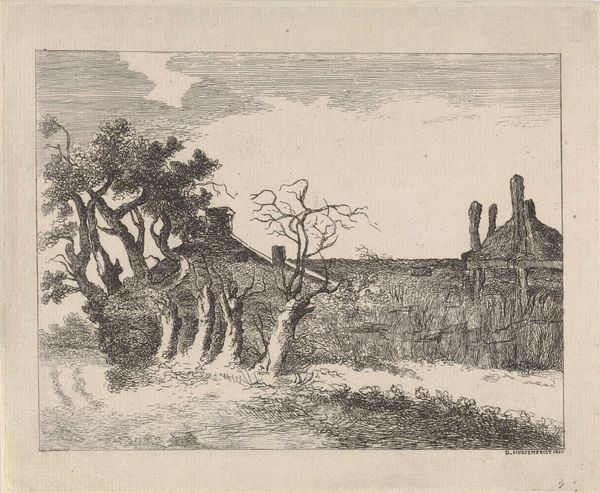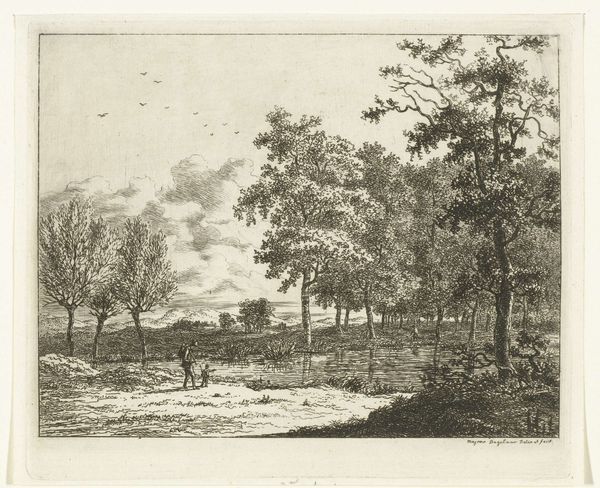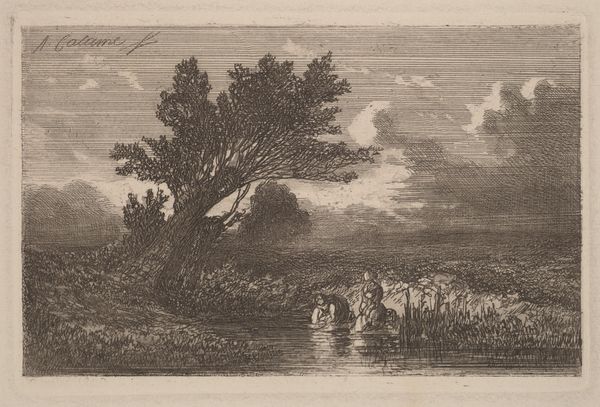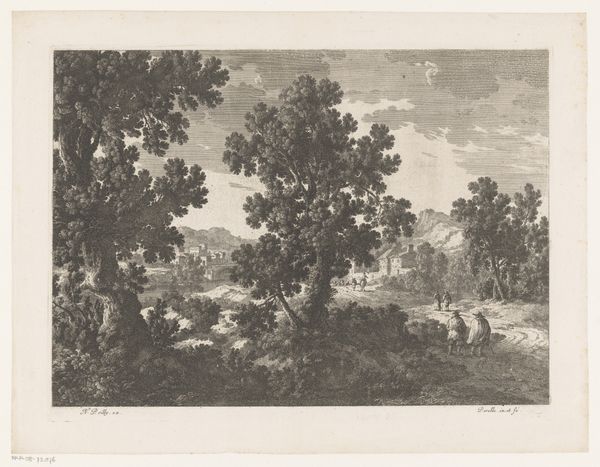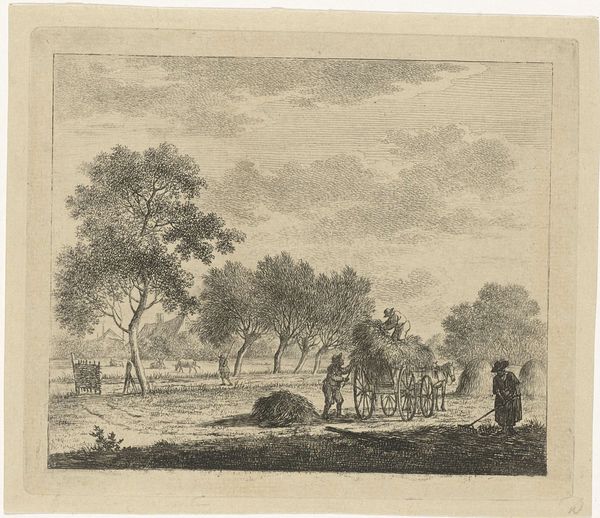
Landschap met een rivier en drie vissende mannen aan de waterkant 1823 - 1883
0:00
0:00
drawing, print, ink, engraving
#
drawing
#
light pencil work
# print
#
pen sketch
#
pencil sketch
#
old engraving style
#
landscape
#
personal sketchbook
#
ink
#
pen-ink sketch
#
ink colored
#
pen work
#
sketchbook drawing
#
pencil work
#
engraving
Dimensions: height 88 mm, width 106 mm
Copyright: Rijks Museum: Open Domain
Editor: This is "Landscape with a River and Three Men Fishing on the Bank," created between 1823 and 1883 by Johannes Adrianus van der Drift. It looks like an engraving, very detailed, and the scene feels so tranquil. What draws your eye when you look at this? Curator: The materiality speaks volumes. As an engraving, it inherently involves a specific labor process: the skilled hand meticulously carving lines into a plate, inking it, and then pressing it onto paper. The act of reproduction is integral here. Was it meant for mass distribution or a more limited audience? Knowing that impacts how we understand its role. Editor: That's interesting! I hadn't considered the printing process itself as part of the art's meaning. Curator: Exactly. Think about the paper too, was it mass-produced, or high quality laid paper? Each decision shapes the work. And the subject itself - fishermen are common figures representing the working class. The act of fishing is both labour and a means of subsistence. How might this connect to broader economic shifts during the time it was made? Editor: So, you're saying the print’s material and its imagery reflect larger social and economic themes of the period? Curator: Precisely. We should question whose landscapes get represented and how. Is this idealized nature for a specific buying class, or is it communicating other information about landscape or class? The lines, the texture, the potential for mass production – these aren't just aesthetic choices; they're evidence of artistic choices made under certain constraints of time, resources and a rapidly industrializing society. Editor: It changes my whole perspective. Now I’m thinking about the role of prints in making art accessible and maybe commenting on daily life and labor. Thanks for pointing out the material aspects, it's given me a lot to consider. Curator: Indeed! By considering how it was made, for whom, and its relation to labor, the print unveils the economic and social landscape that shaped its creation.
Comments
No comments
Be the first to comment and join the conversation on the ultimate creative platform.
